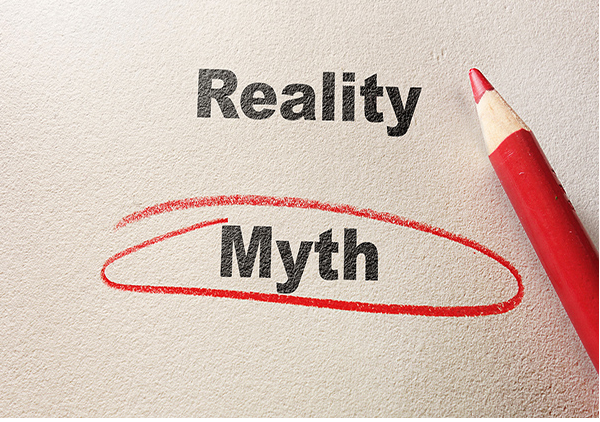10 Health and Safety Myths – #4 “We Have a Safety Culture” – Yeah. Nah!
Of course we have a safety culture
 For me, the notion of a safety culture falls firmly into the “myths” category, along with “passion for safety” and “zero harm”. It’s something you only talk about if you don’t really have it. And why do you talk about having it? Because a) it sounds like something you need, and therefore b) you fervently want it to be true. It’s the promised land and it sounds virtuous and inspiring. Never mind just doing simple stuff consistently. Instead, we need to jazz it up and put it on a pedestal. And preferably make it sound a bit righteous so we can commit ourselves to a lifetime of devotion. Oh, and ensure it never comes to fruition by making it always just out of our reach and by moving the goalposts as we go.
For me, the notion of a safety culture falls firmly into the “myths” category, along with “passion for safety” and “zero harm”. It’s something you only talk about if you don’t really have it. And why do you talk about having it? Because a) it sounds like something you need, and therefore b) you fervently want it to be true. It’s the promised land and it sounds virtuous and inspiring. Never mind just doing simple stuff consistently. Instead, we need to jazz it up and put it on a pedestal. And preferably make it sound a bit righteous so we can commit ourselves to a lifetime of devotion. Oh, and ensure it never comes to fruition by making it always just out of our reach and by moving the goalposts as we go.
Dang, I’m such a cynic!
But using my favourite analogy once again: Supposing your Finance Team announced proudly that they have a finance culture. You’d walk away wondering how such a thing could happen. I mean, aren’t they just supposed to look after the numbers competently? What does culture have to do with that? They don’t need to get all fluffy. They just need to do their jobs.
To be fair, “we have a safety culture” seems like a worthy statement. After all, safety is about people and we all need to be on the same page, don’t we?
Well, maybe. But humans aren’t. Nor should they be.
Doubts about “we have a safety culture”
 I researched “safety culture” for a post around this time last year (Oct 2018). Before I did the research, I had my doubts about “we have a safety culture”. It seems to me that as soon as someone says that, they are standing outside looking in, and almost certainly nothing’s in the box. And sorry, but they invariably work in a large organisation, where every 6 months, there’s a new campaign about something. Surely, if you really do live within a “culture”, you would hardly ever talk about it? It just “is”. It’s complete. It’s an unspoken conviction, not something you put on the wall with a frame around it. And you wouldn’t be re-inventing yourselves regularly.
I researched “safety culture” for a post around this time last year (Oct 2018). Before I did the research, I had my doubts about “we have a safety culture”. It seems to me that as soon as someone says that, they are standing outside looking in, and almost certainly nothing’s in the box. And sorry, but they invariably work in a large organisation, where every 6 months, there’s a new campaign about something. Surely, if you really do live within a “culture”, you would hardly ever talk about it? It just “is”. It’s complete. It’s an unspoken conviction, not something you put on the wall with a frame around it. And you wouldn’t be re-inventing yourselves regularly.
But what is “safety culture”? Is it necessary? Does it even exist?
After the research last year, I think not. I hope I didn’t suffer too much “confirmation bias” but I couldn’t find any piece of credible evidence that gave the concept more than a “curiosity” status. Sorry, but it’s probably just a construct with no basis. A nice assumption. A myth.
Anyway, I don’t intend to repeat the same post. Instead, I’m going to outline the key findings briefly. That’s because this topic had to be in my top 10 Safety Myths. But the original post is here if you didn’t see it before.
Key findings of the research
- The paper I largely used was “Understanding and Exploring Safety Culture”, author Frank W Guldenmund, Delft University of Technology, 2010. It’s a digest of existing social science research on “Safety Culture”.
- The various definitions of safety culture tend to have a commonality around there being “espoused values” (the things people adopt or support); and “artefacts” (things with cultural meaning, like policies, conspicuous use of PPE, slogans, words and language).
 Research by social scientists tends to strongly indicate that the concept of “safety culture”, while seen as important, is fuzzy. Even an empty space. Schein (1992) says it is “hard to define, hard to analyse and measure, and hard to imagine.”
Research by social scientists tends to strongly indicate that the concept of “safety culture”, while seen as important, is fuzzy. Even an empty space. Schein (1992) says it is “hard to define, hard to analyse and measure, and hard to imagine.”- Guldenmund defined 5 concepts of safety culture. They are:
- Scientific. (A network of basic assumptions supporting behaviours)
- Belief. (A “religious” perspective, requiring adherence and constancy)
- Sensitiser (Nothing concrete. Triggers people to look in the right places for it)
- Scrutiniser (Checking yourself in a mirror for improvements. Where are we at in the safety culture score sheet?)
- A thing (A machine, in which manual adjustments can be made).
- There are suggestions by the author that “the theory (safety culture) has not progressed much. There is little to support it as a valid idea, or that it is a predictor of improved safety, therefore (it) has not advanced beyond development stages”.
My suggestions
- My belief is that we can’t go out and “create” safety culture per se. Should we even need to?
- Culture is like making a good cup of tea, where flavour (the culture) is a result of doing a number of things right
- Leadership and worker participation are both essential in my opinion
- Do simple stuff well. You don’t need passion. See a previous post
- Demonstrate consistently what is important. And not just about safety
- Gradually, something you can’t see develops around you. It’s not something that deserves a particular label (e.g.”safety culture”), because it’s just “doing things right”. That’s big! It’s all about coherence in the organisation.
- If you really do want to say “we have a safety culture”, well, OK, but that’s not what created the safe workplace. It arose from it. Like the flavour and aroma rising from a good cup of tea. Claiming to have a safety culture is talking about a result, not a means of getting there. So if you’re talking about it, you probably haven’t achieved the result yet. Make sense?
Righto then..
Contact me if I can help you with any safety stuff. Call 0800 000 267 for a welcoming chat, or email simon@safetypro.co.nz
- Simon Lawrence is Director of SafetyPro Limited.
- Consulting for safety: Safety Advice, Problem Solving, Audits and Training
- Call 0800 000 267 for a welcoming chat, or email simon@safetypro.co.nz
My 10 Health & Safety Myths. Planned topics and dates.
-
- # 1: Passion for Safety – Please no! 29 August 2019
- #2 Lost Time Injury Rates – Dark Arts in the Boardroom. 18 September 2019
- #3 Zero Harm – Stop Taking it Literally! 9 October 2019
- #4 We Have a Safety Culture – Yeah. Nah! 30 October 2019
- #5 Safety Audits – Smoke and Mirrors 20 November 2019
- #6 Safety Manuals – You’d Think it Would be Simple 31 January 2019
- #7 Safety Policy Statements – You Are Committed to What? 21 February 2020
- #8 The Hazard Register – What Is It Really For? 7 August 2020
- #9 Accident Investigation – Tick & Flick 28 August 2020
- #10 Contractor Management – The Thin Paper Wall 18 September 2020
Check out our SafetyBase software
- View a 4 minute video overview. Please like or share.
- Browse the SafetyBase website.
- Short cut to the all-important Pricing Page. No hidden costs.
- Download a PDF Fact Sheet to show to your Senior Leadership Team.
Call me, Simon, on 0800 000 267 or email simon@safetypro.co.nz You could be trying out this highly effective health and safety software system in minutes

